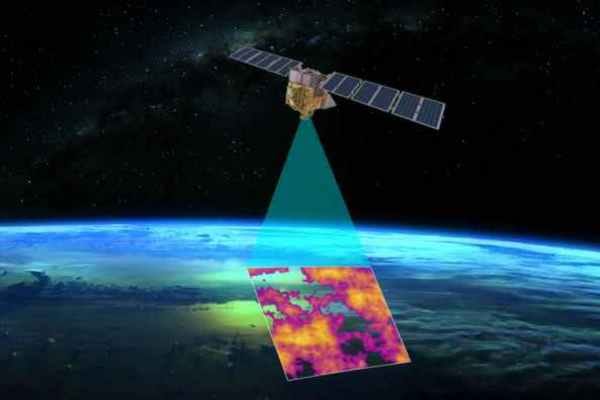Hidden methane in the spotlight
New satellite has unveiled previously undetected methane leaks that already surpass official estimates.

A new satellite has uncovered methane leaks at levels previously unrecorded, revealing gases being emitted in quantities higher than reported.
MethaneSAT was developed by the Environmental Defense Fund (EDF) to deliver game-changing insights by pinpointing emissions from smaller, scattered sources often missed by traditional monitoring methods.
The data is considered critical because methane packs a far more potent punch than carbon dioxide when it comes to heating the planet.
This powerful greenhouse gas is behind roughly 30% of the global temperature rise since the industrial revolution, according to the International Energy Agency (IEA), making it a critical target in the fight against climate change.
MethaneSAT was launched earlier this year aboard a SpaceX rocket and its high-resolution technology is already shaking up climate science with data that challenges official estimates.
"These insights will help stakeholders gain a much clearer understanding of the emission challenges and track progress over time"
It's recent observations showed methane levels in the Permian Basin were three to five times higher than the US Environmental Protection Agency’s (EPA) figures from 2022. Meanwhile, emissions in the South Caspian Basin were found to exceed the most recent estimates by more than tenfold.
These findings align with research indicating that smaller, scattered emissions account for a substantial portion of total oil and gas methane output, according to MethaneSAT's creators.
They say MethaneSAT has also demonstrated its ability to detect emissions in cloudy conditions, by combining wide swath, high precision, and spatial resolution to bridge the gaps in regional data that hinder other satellites.
The satellite’s data is expected to accelerate emissions reduction efforts by enabling comparisons of methane output across global production basins as a tool to monitor progress toward commitments established at the United Nations Climate Change Conference.
Small, yet significant
According to MethaneSAT Mission Lead, Dr Steven Hamburg, MethaneSAT was designed to give the “whole picture of emissions for the first time across all types of production basins, both big sources and thousands of smaller ones”.
“It functions like a wide-angle lens, covering large areas in a single image, with great clarity," he said. "These insights will help stakeholders gain a much clearer understanding of the emission challenges and track progress over time.”
MethaneSAT has attracted wide industry support, and in July the Bezos Earth fund announced US$10million of new funding for the venture.
President and CEO of the Bezos Earth Fund, Sir Andrew Steer, said the new technology would empower oil and gas producers to “play an important and essential role as part of the solution to methane emissions”.
Recent space-based projects are putting other forms of pollution in the spotlight. The Tanager-1 satellite was launched via SpaceX in August to enhance efforts to identify and quantify CO2 emissions from the world’s largest emitters, and a national water quality monitoring and forecasting service is being developed by the CSIRO in Australia.
MethaneSAT has the ability to precisely measure methane levels with high spatial resolution over wide areas, allowing it to track gases escaping from oil and gas production. Its wide-camera view is designed to survey large areas – or even whole states or countries, as well as much smaller, diffuse sources. The images it has collected include the Appalachian, Permian and Uinta basins in the US, the Amu Darya and South Caspian basins in Turkmenistan and the Maturin basin in Venezuela. According to early data collected by the satellite, methane emissions observed in several regions are greater than current official estimates.





